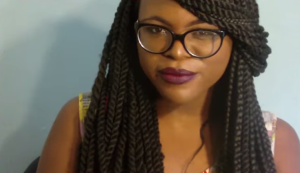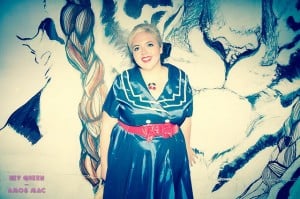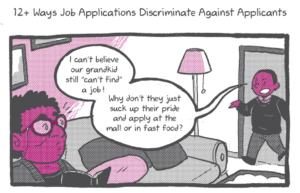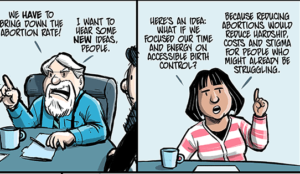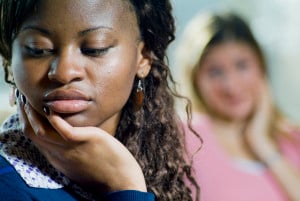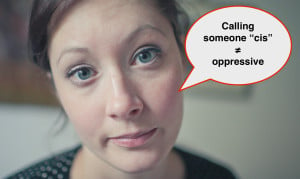This video is part of a series for Everyday Feminism, a website dedicated to helping you stand up to and break down everyday oppression.
As a mixed race Asian-American woman, I don’t often see myself represented in Hollywood.
And sure, there are a handful of half Asian actresses I could look to for representation, such as Chloe Bennet from Agents of Shield, Olivia Munn from The Newsroom, and Kimiko Glenn from Orange Is the New Black.
However all of these actresses have different ethnic and cultural backgrounds, different family histories, and vastly different lived experiences from my own. That’s not to say I should look for an actress to represent me 100% – because that’s never going to happen – but with extremely limited options to choose from, it’s unlikely I will find someone who will even come close to representing my racial and ethnic identity.
This is why I was so frustrated and upset when I found out that Emma Stone is playing an Asian and Pacific Islander character in the recently released movie Aloha. When I think of Asian actresses that can represent me, the snow-white-skinned, blonde-haired, and green-eyed Emma Stone is probably the last person on my list.
She is supposed to play a character who is a quarter Chinese and a quarter Hawaiian, which you would never know simply by looking at her. Also as a disclaimer, I think Emma Stone is incredibly talented and she’s one of my favorite actresses of all time, but excuse me for failing to see any semblance of “Asian-ness” in a person who is 100% White.
Stone recently defended director Cameron Crowe’s casting choice, stating, “The character was not supposed to look like her background which was a quarter Hawaiian and a quarter Chinese,” she says. Which is just like, what?
It seems to me like a convenient way to cast White people in stories about people of color without—ya know—actually representing and giving jobs to people of color. This says that it’s okay to use the culture and unique experiences of people of color without actually showing them on screen in prominent roles.
Emma Stone playing a mixed race Chinese and Hawaiian character is not the only problem with the casting of this movie. Let’s take a walk through the cast list for Aloha, shall we?
Bradley Cooper, Rachel McAdams, Bill Murray, John Krasinski, Danny McBride, Alec Baldwin. What do these people all have in common? Hint: It’s not just their acting abilities.
Considering that White people are a minority in Hawaii, as about 70% of the population is non-white, it is pretty insidious that it boasts a 100% White main cast (but not completely surprising).
Fun fact: Hawaii actually has the highest population of Asians, Pacific Islanders, and multiracial people and the lowest population of White people out of any state.
I’m sure there will be a sprinkling of Asians or Pacific Islanders in the background as extras or even one or two with speaking roles who serve to teach the White cast members the “true meaning of Hawaii,” but the problem is that Aloha uses a place with immense cultural significance and history as a backdrop to tell yet another story about White people – even when, statistically, it should be a story about everyone but White people.
Guy Aoki, former resident of Hawaii and founder of Media Action Network for Asian Americans, released a statement about the movie, saying:
“[Aloha] comes in a long line of films (The Descendants, 50 First Dates, Blue Crush, Pearl Harbor) that uses Hawaii for its exotic backdrop, but goes out of its way to exclude the very people who live there. It’s an insult to the diverse culture and fabric of Hawaii.”
This is especially problematic considering Hawaii’s history with White Americans is one of colonization, exploitation, and corporate tourism. American settlers colonized Hawaii, marginalized the native population, banned their language, and then appropriated their culture and land for profit. But don’t worry – it’s all because they appreciate Hawaiian culture so much.
Keep in mind when I talk about the misrepresentation of Asians and Pacific Islanders, it is coming from a place of seeing White characters in television and film constantly. Rarely do I ever get to see Asian or Native American or Latinx actors on the screen in significant roles. And when I do see people of color represented, they often exist only as sidekicks and stereotypes.
As statistically and culturally significant members of society, people of color deserve to be represented in television and film. Unfortunately, the numbers for the amount of Asian actors and other actors of color represented in Hollywood are appalling.
You might argue that the reason Asian actors are underrepresented in film and television is because Asian and Pacific Islanders make up a smaller population in comparison to White Americans. However, when we compare the population of Asian Americans to the actual number of Asian roles in film, they are still vastly underrepresented.
According to the US Census Bureau (which I find myself constantly referencing), Asian/Pacific Islanders make up 12.8% and 15% of the populations of New York and LA respectively (where a good portion of films and television take place), yet only had about 4.4% of speaking roles in 2013. And out of those extremely limited roles, only 32% of Asian characters were women.
The problem with Asian representation isn’t just that the amount of Asian roles in Hollywood are extremely limited, but that these roles are often given away to White actors.
There is a long history of Hollywood whitewashing roles meant for people of color (insert clips of films that do this, ex: Hunger Games, Scarlet Witch in Avengers, exodus: gods and kings, etc.) But when the situation is reversed (show headlines for Annie movie, Miles Morales as the new Spiderman, Michael B. Jordan in the Fantastic Four reboot, Nick Fury, Idris Elba in Thor), there is often controversy and outrage.
With so many limited roles, Asian actors also can’t afford to be picky about roles. Asian and Pacific Islanders are often cast to play characters with different ethnicities from their own which perpetuates the stereotype that Asian people and Asian cultures are interchangeable. The lack of roles and the repeated use of tired Asian character tropes give the impression that “Asian” is a monolithic identity and every Asian-American experience is the same.
I’m a little embarrassed to admit this, but I’m going to share a little personal story about what it feels like to be represented in television and film. I recently marathoned a show (*cough* Agents of SHIELD), and there came a point when I actually started crying during an episode because three of the main actors were Asian women and two of them were mixed race like me. This was a moment when I realized there was not only one badass Asian woman to look to onscreen, but three.
It can be incredibly easy to overlook the importance of representation when you can flip to almost any channel on TV and see yourself represented. But when you rarely, if ever, get to see people that look like you on screen, finally seeing yourself included in television and film is incredibly powerful.
Representation may seem like a small issue to care about when people of color are marginalized in virtually every area of society, not just the entertainment industry, but seeing ourselves represented in stories communicates that we exist and we matter.
That is why it is so important to create diversity in Hollywood and show a variety of Asian and Pacific Islanders on screen. One or two representations of Asian characters or any characters of color isn’t enough because no one voice can or should represent their communities as a whole. By creating diverse and complex characters of all races, we show people that we are more than just the racial stereotypes used to confine us.





